This past week I hiked Bukit Kiara Hills, a forest park about an hour by metro west of the city center in Kuala Lumpur, Malaysia. At the entrance, families of monkeys gather under the shade. Leaves can be heard rustling up above as some would swing from branches up in the canopy. I hadn’t even started, and I was already sweating profusely, but I was on a mission to find some new-to-me species of mushrooms.
Among some of the larger ascomycetes were Cookeina that sprout like colorful flowers from the smaller twigs and branches that had fallen on the forest floor.
Cookeina speciosa
The outer surface is less brightly colored compared to the inside of the cup. The excipulum, the tissue making up the walls of the fruiting body, is thin and flexible.
I was surprised by how big these cup fungi were. I’d only seen them in photos before and figured they’d be smaller, yet they immediately caught my attention - two bright orange and pink colored rubbery thimble-sized cups. These small cups collect rainwater and, through evaporation and thinning of the inner wall, release spores.
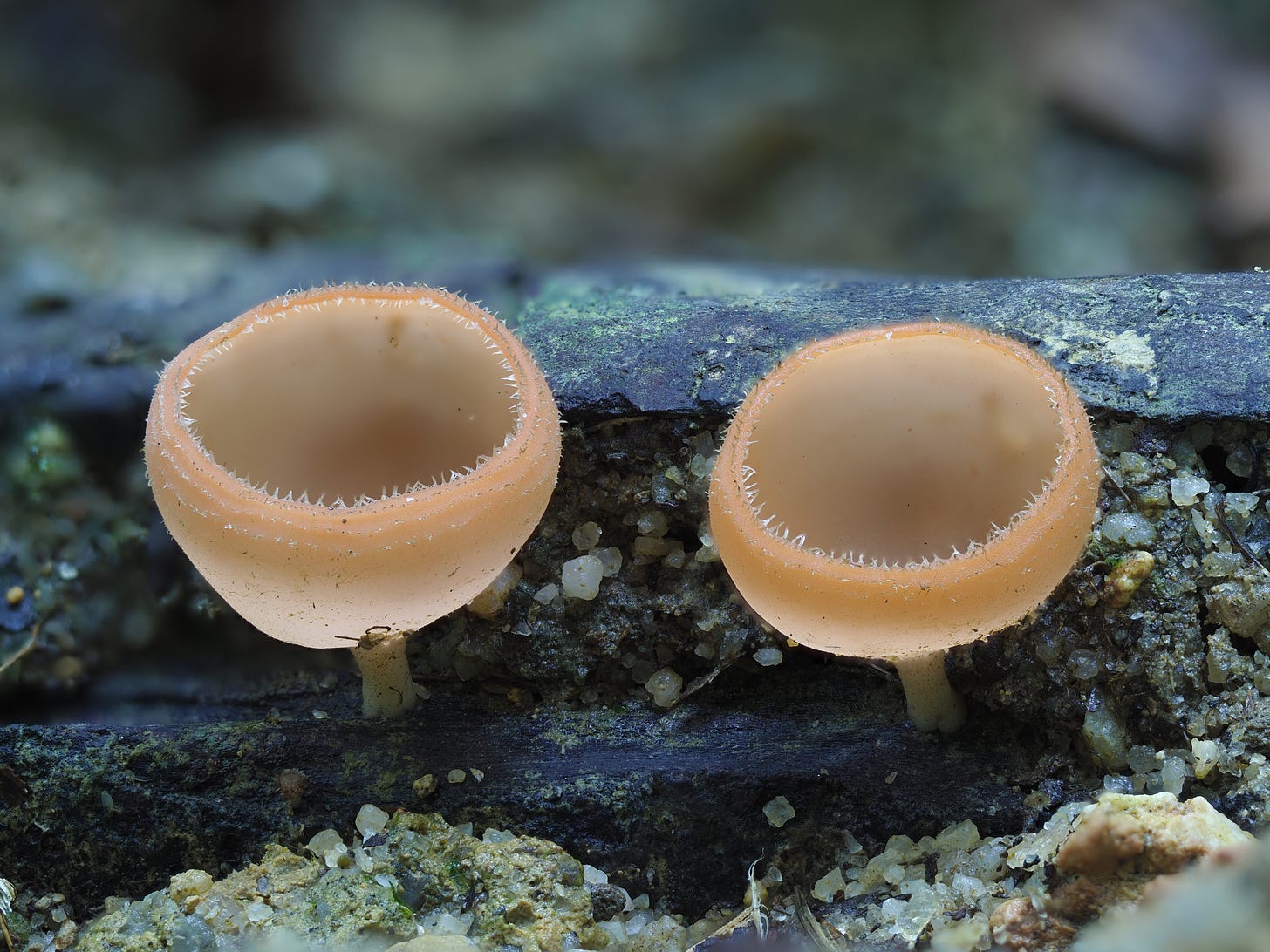
The Temuan people are an indigenous group in Malaysia and are believed to be the descendants of the Orang Asli, the original inhabitants of the Malay Peninsula. These people have a rich culture and tradition and are reported to have used Cookeina species as food cooked with other ingredients and also as bait for fishing.
Marasmius sp.
Marasmius comes from the Greek word “marsmos”, which means drying out.
Amongst the broad leaves were heaps of pinwheels or Marasmius species - small yellow-orange-brown needle-thin stipes that stand tall.
In tropical rainforests, plants and fungi absorb nitrogen and phosphorus as soon as they become available. There is so much competition for nutrients among the various life forms in these environments that decomposition rates are rapid. This results in fallen animal and plant debris being quickly broken down and assimilated into living structures.
Just down a muddy side track, I come across tiny purple/maroon-colored pinwheels growing from the base of a broadleaf.
A common name for this species (Marasmius haematocephalus) is Mauve Parachute.
This saprotroph feeds on dead organic plant matter, a hot commodity. The intense competition for the nutrients in fallen leaves and twigs has resulted in some interesting adaptations that have greatly enhanced its fitness. Marasmius extends its rhizomorphs above the forest floor and catches leaves and twigs before they hit the ground.
Filoboletus manipularis
Kiara Hills has many paths, and after a few hours of scrambling through the mud, I decided to take a shortcut along a creek. I was on the lookout for a well-known luminous porecap mushroom and was lucky enough to find a few growing on a rotting log caught in a stream.
Filoboletus is a Genus belonging to Family Mycenaceae, which also has the most abundant species of bioluminescent mushrooms.
After taking some long-exposure shots, I posted them to my Instagram, and a fellow BL mycophile from Taiwan sent me a similar-looking one that grows in southwestern Japan, named Mycena flammifera.
Interestingly, the same species in different countries emit light in different parts of the fruiting body. F. manipularis found here glow in both the pores and stipe, yet in Taiwan, the same species only emits light in the stipe (not the pores). And just like Panellus stipticus glows in the NE United States, the same species doesn’t glow at all in New Zealand and even in other parts of the US.
After updating the Wikipedia page - List of bioluminescent fungus species, this brings the total count to 67 BL species within Family Mycenaceae. Given that there are around 500 species of Mycena, that means over 10% are known to glow.
It’s been raining in the late afternoon to early evenings here (monsoon season) - so I was lucky to get some sun and clear skies for a few hours before the downpour.
Next week I’ll be in Penang and Langkawi where I aim to find more bioluminescent mushrooms. Malaysia currently has 23 recorded BL species (1 Armillaria, 14 Mycena, 2 Nothopanus, 3 Panellus, 1 Pluerotus, and 2 Roridomyces). This country has nearly a quarter of all recorded species, so hopefully more will be discovered and I can share these with you. Till next time.




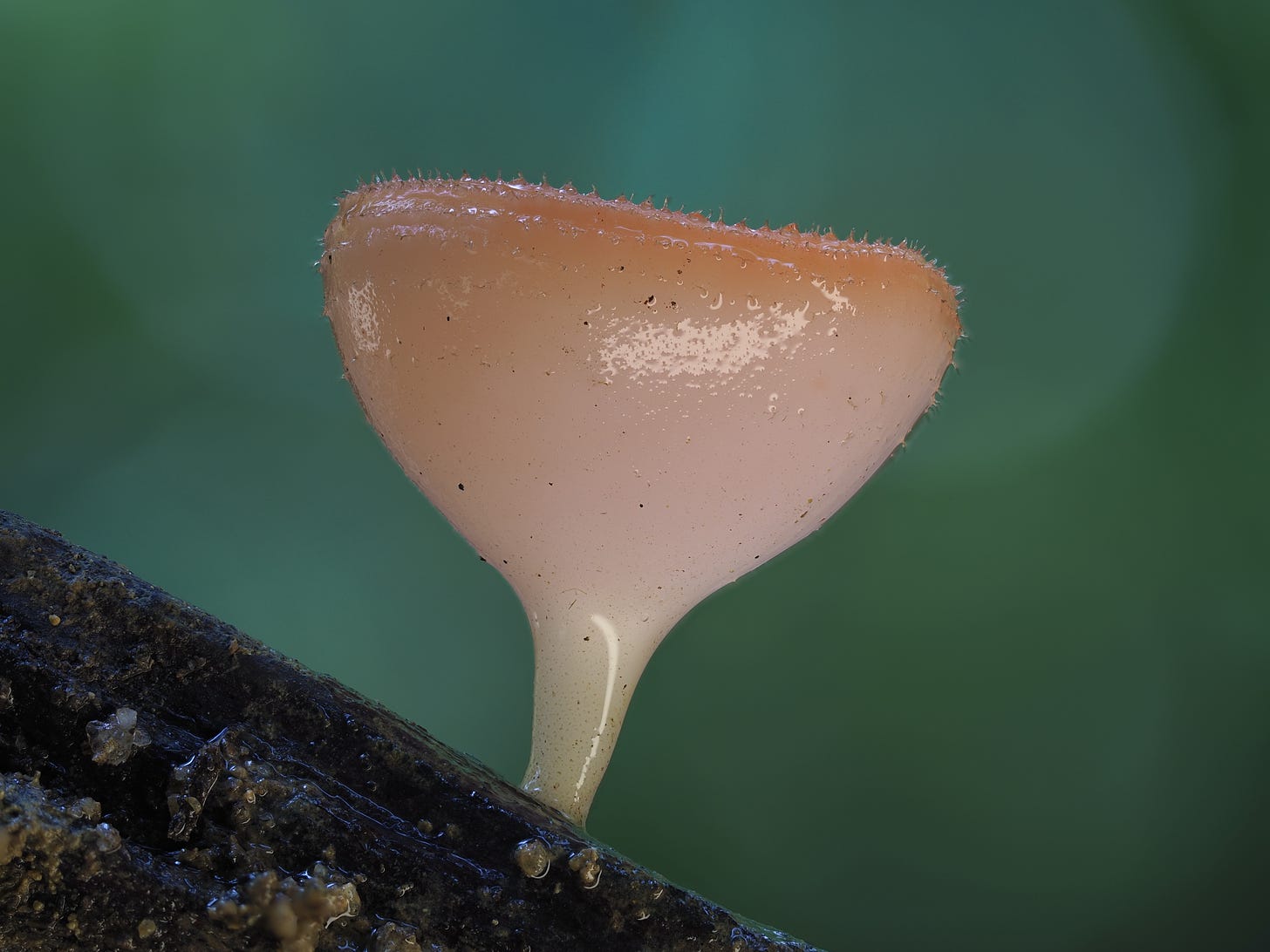
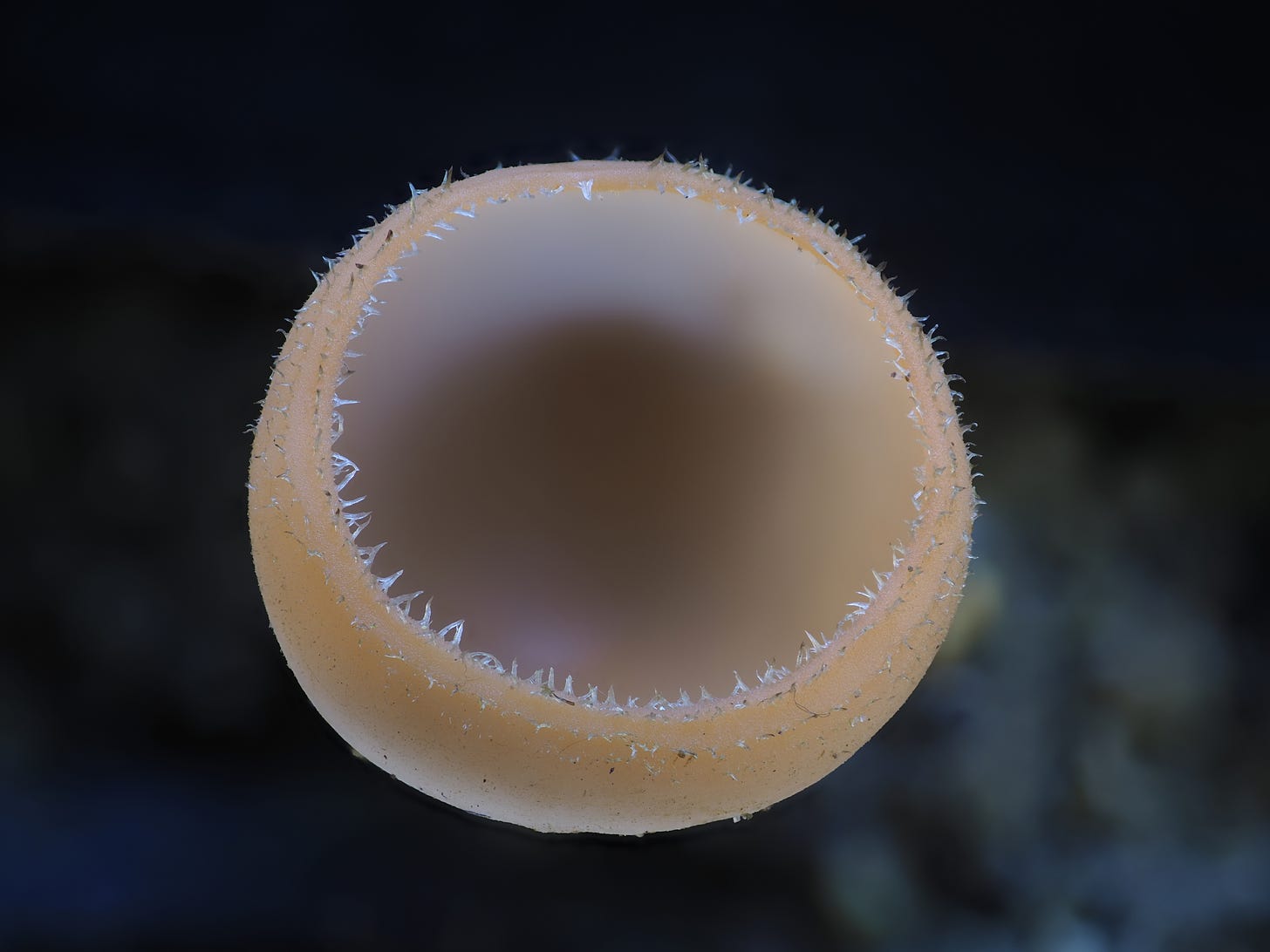

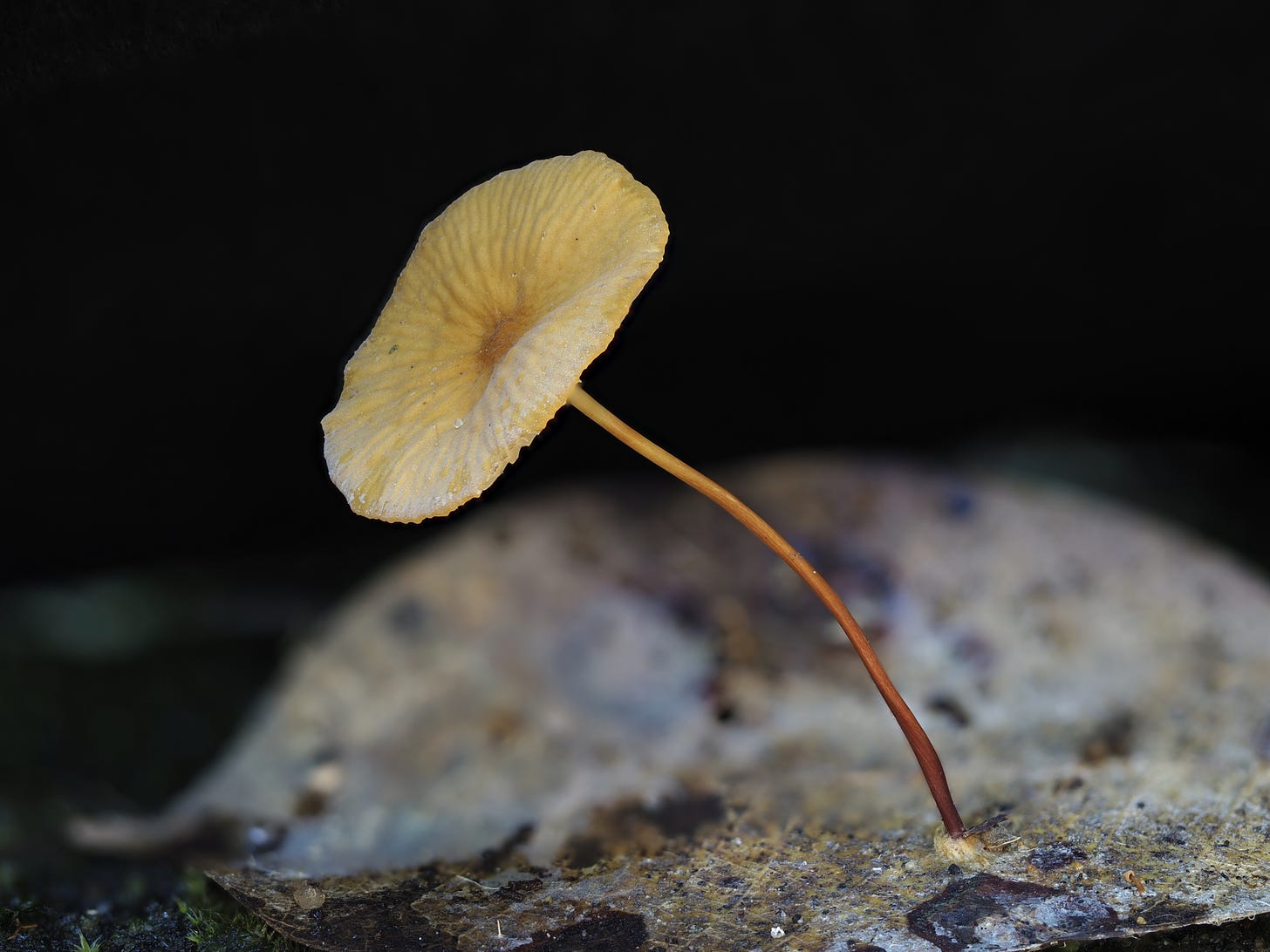
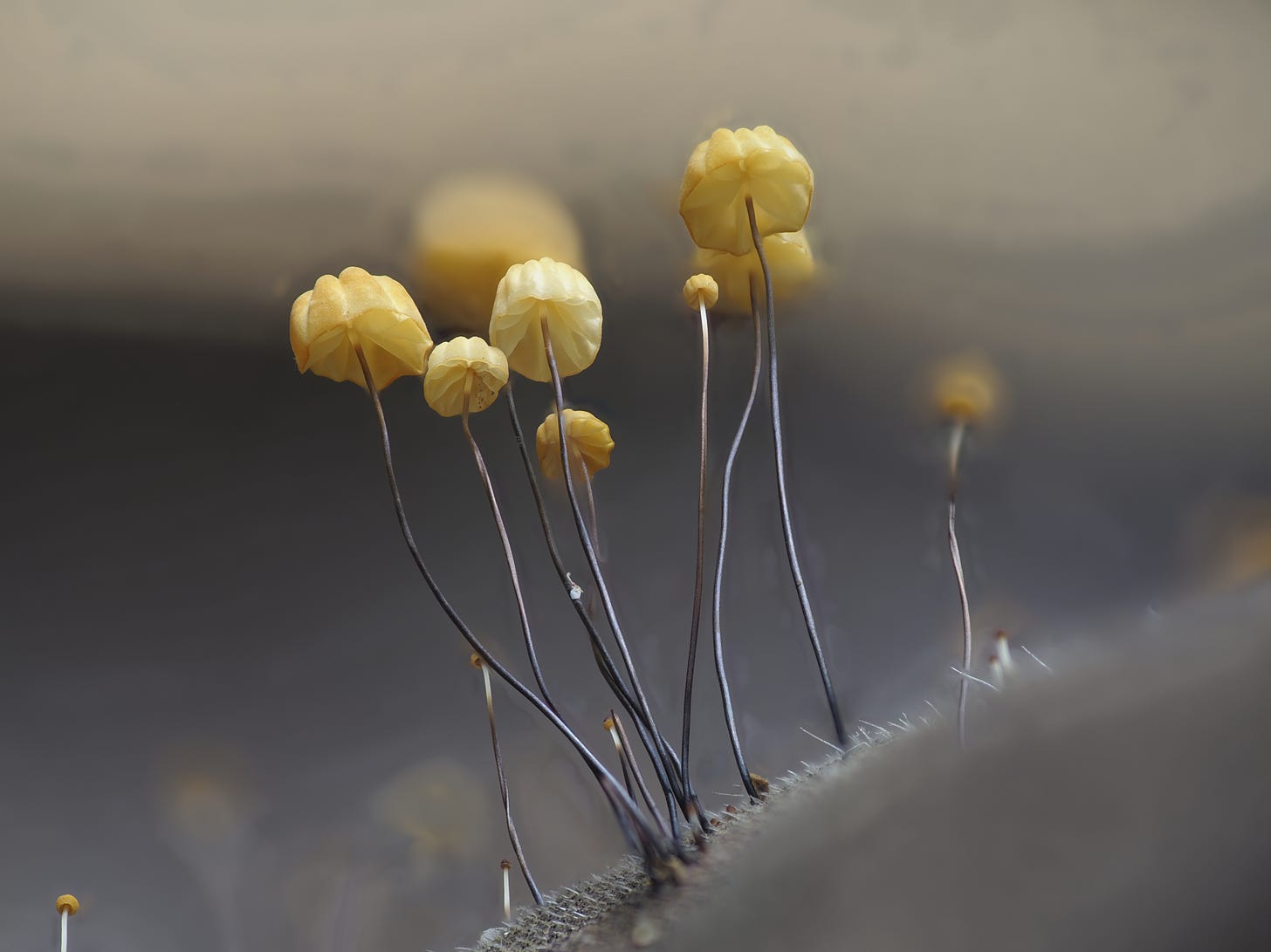
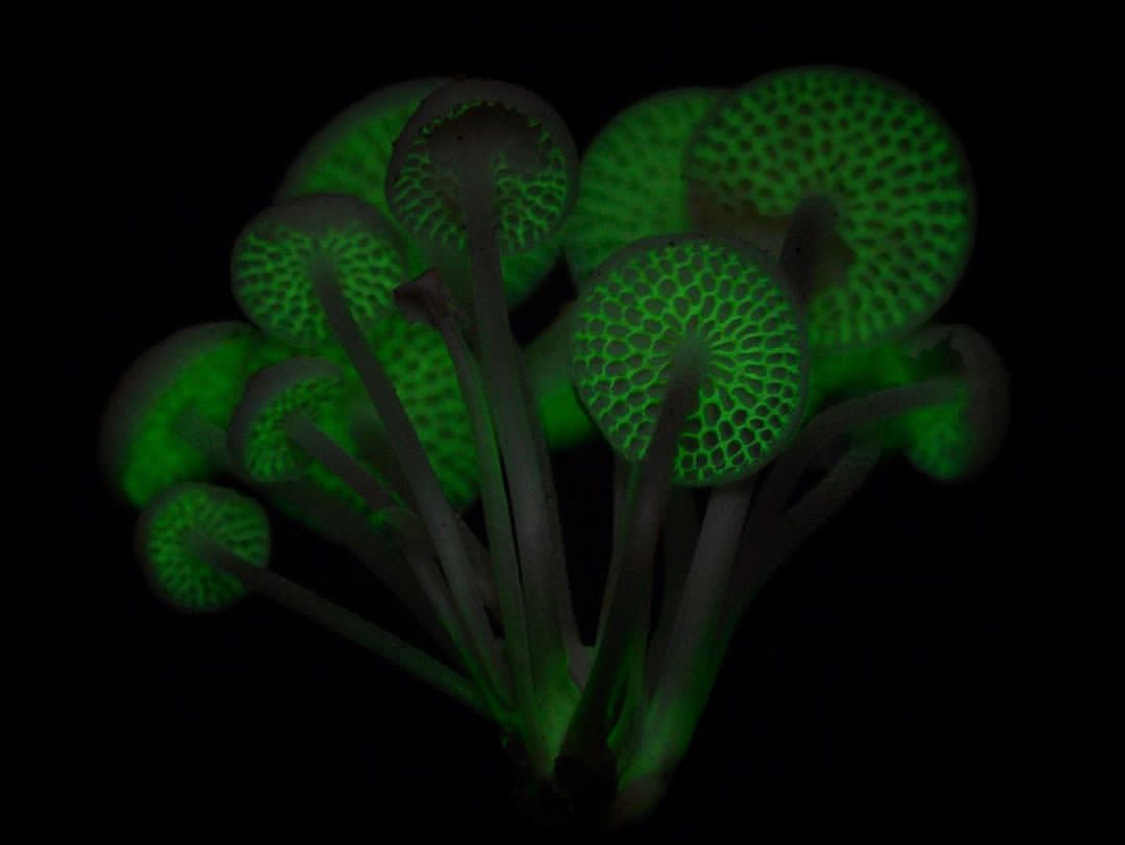


Today in Bukit kiara, I spotted some fingernail sized bright orange cup fungi. Any idea what they are? I can't find them in my eurocentric books...
Very interesting Joe! Keep 'em coming!